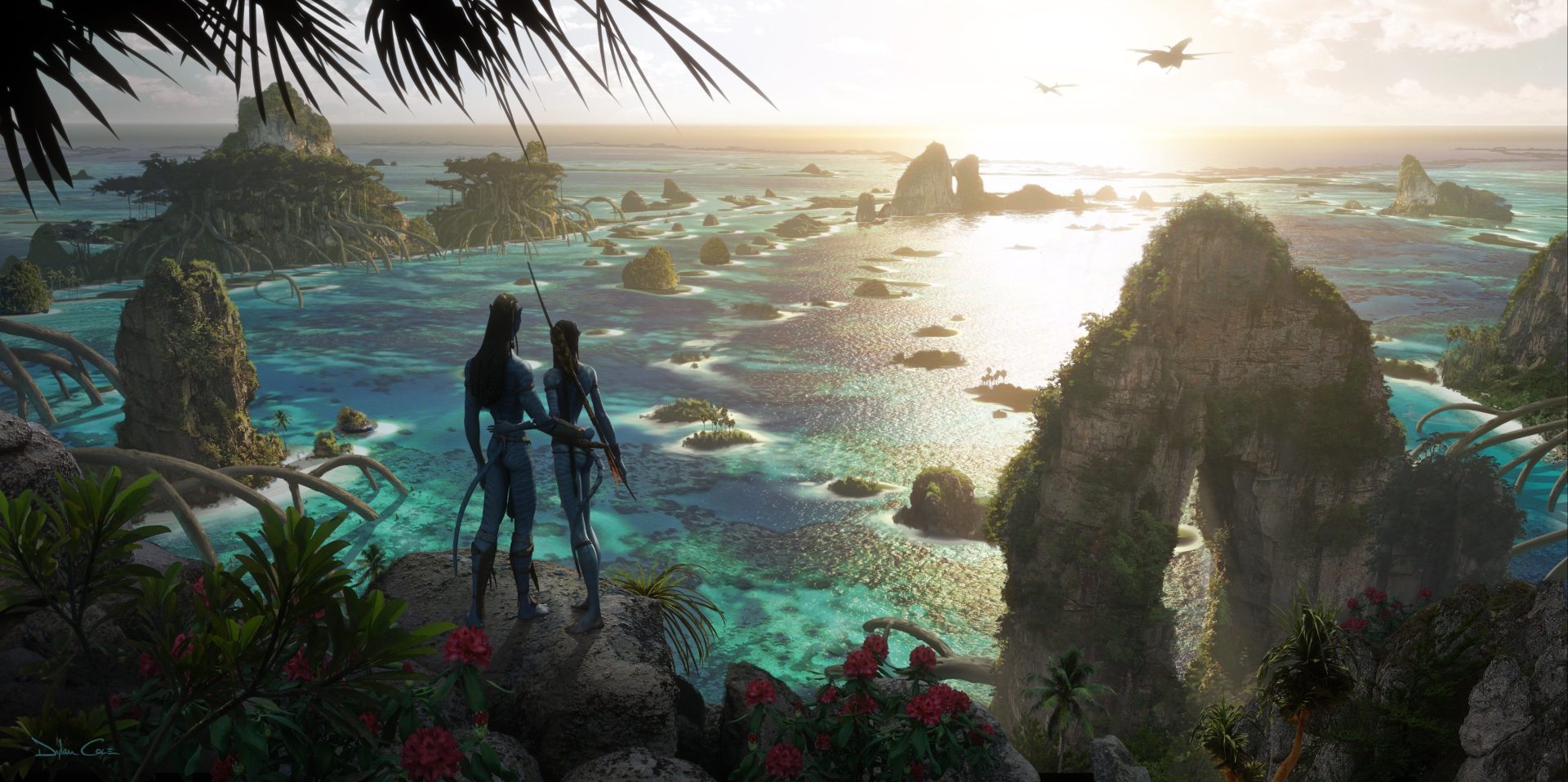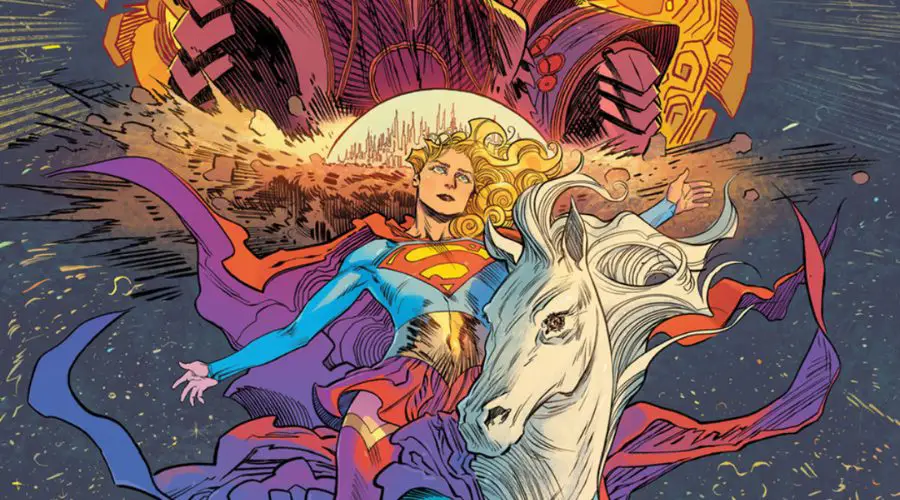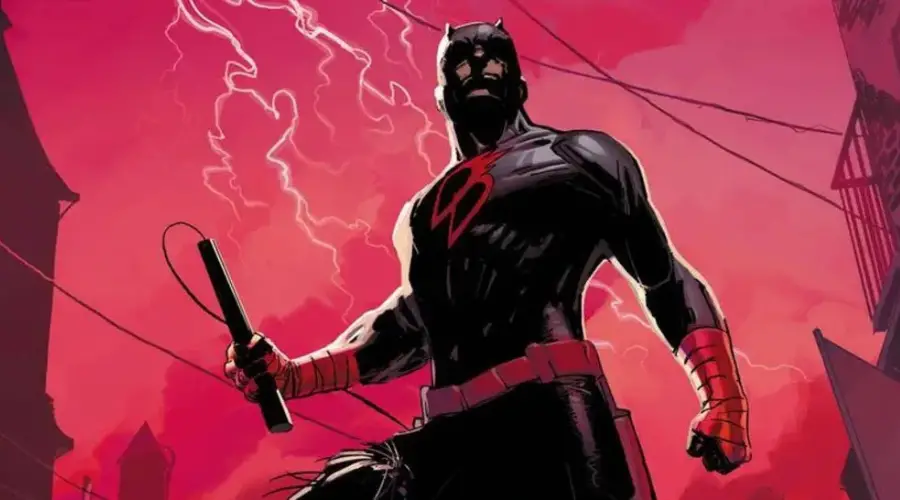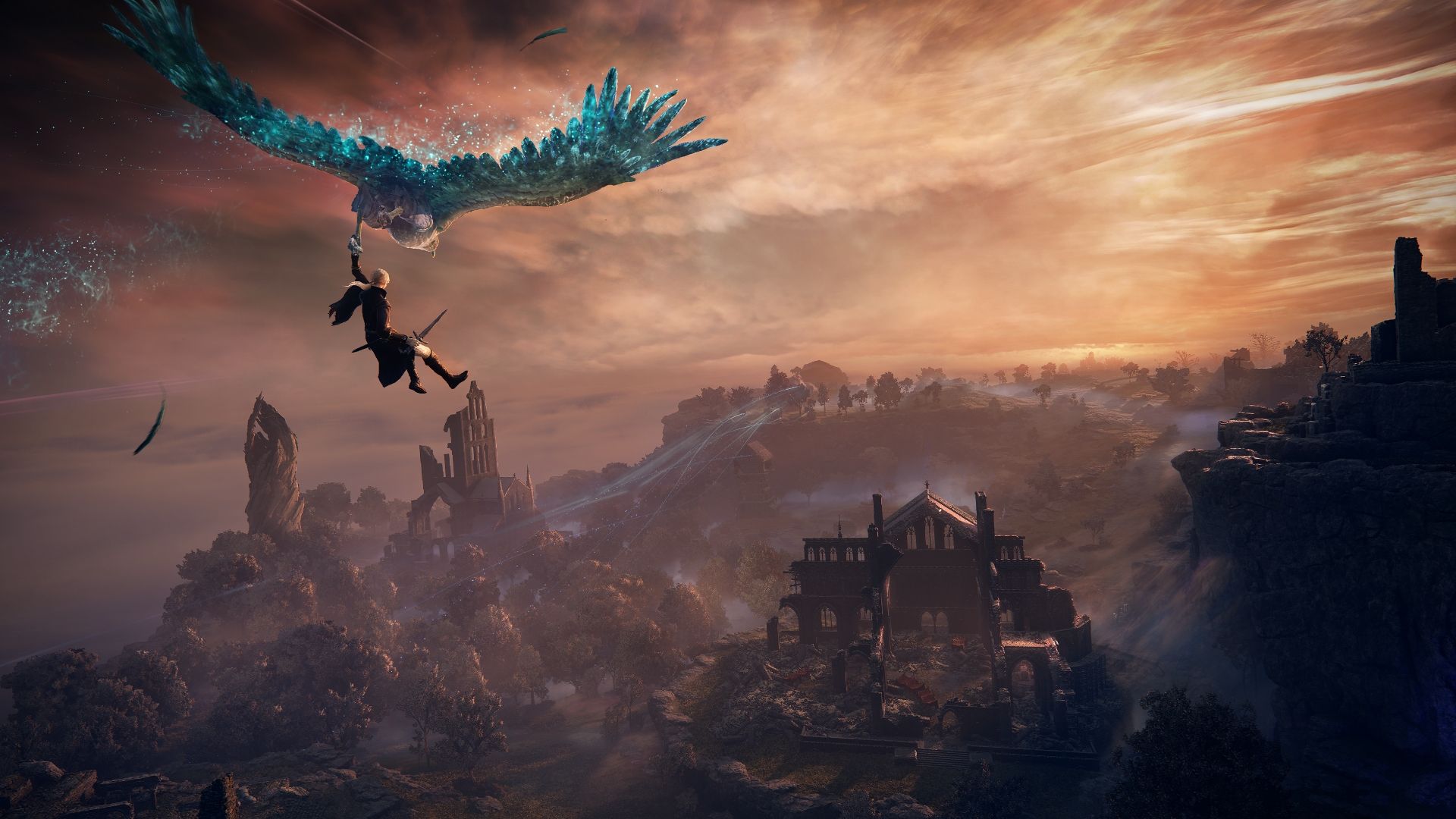Water, like cinema, is ever-changing, bending to the will of whatever and whoever holds it. To the unimaginative, it’s something to contain – to force into increasingly unnatural shapes that may be impressive, but artificial. In its true splendor, water flows free, as the ecosystem around it pushes it forward. James Cameron’s long-awaited follow-up to the highest-grossing film of all time, Avatar: The Way of Water represents cinema at its most open, riding on the tides of years of progress to form a massive wave ready to envelop everything in its path.
READ: ‘Avatar’ (Re-Release) Review: “Audiences Are Finally Ready For James Cameron’s Superb Achievement”
Avatar: The Way of Water picks up over a decade after the original. As the leader of the Omaticaya clan, Jake Sully (Sam Worthington) keeps his family unit strong while fighting off the colonizing Resource Development Administration (RDA). The RDA has resurrected Sully’s former foe, Miles Quaritch (Stephen Lang), as a “Recombinant”: an avatar with the cloned memories of a human. Those memories push Quaritch to set his sights on Sully and his family, forcing them to go into hiding.
As is to be expected for a James Cameron blockbuster, Avatar: The Way of Water can feel overwhelming. Maybe a bit too overwhelming to start. This time Cameron drops us right into the family life of the Sullys. Jake and his mate Neytiri (Zoe Saldaña) are struggling with the pains of raising a troublemaking middle child, Lo’ak (Britain Dalton), and an adoptive daughter, Kiri (Sigourney Weaver). Save for brief bits of narration from Worthington, it does not re-explain the existing lore. The movie expects audiences to know terms like “Eywa” and “Tsaheylu” already while making room for more terms Cameron adds.
Furthermore, the director has made his preference for High Frame Rate 3D known. Said format feels uncanny, especially when it shifts back and forth in between 24 FPS in close-ups and 48 FPS. The motion is remarkably smooth, to the point where it feels more like watching a nature documentary. To watch Avatar: The Way of Water for the first time is to be thrown into the deep. You sink or you swim. Rest assured, it’s easy to get acclimated. After about 20 minutes, the stunning clarity and pervasive world-building become boons.
The Sullys arrive in the grace of the teal-skinned, ocean-bound Metkayina tribe. Led by Tonowari (Cliff Curtis) and his wife Ronal (Kate Winslet), their modest kingdom brings a tear to the eye. Populated by exquisite marine life, the ocean raises a child-like joy out of even the most hardened audience member. Cameron wisely lets the sections of exploration breathe, knowing the kind of majesty that the film provides.
READ: ‘Empire of Light’ Review: “Shaggy Melodrama Finds Escape In Connection”
Since 2009, Avatar has been routinely criticized for what some say is a simplistic plot. As much as I protest that criticism, this sequel does take measures to expand the narrative. This time, Cameron and co-screenwriters Rick Jaffa and Amanda Silver build a rich family drama spanning generations. Sam Worthington and Zoe Saldaña are still as serviceable here as the leaders of the pack, doing whatever it takes to keep their family unit together. Yet, there are three characters who make Avatar: The Way of Water’s story worth following.
Lo’ak and Kiri are the type of characters you can hang an entire franchise on. They’re both relatable in their youth in totally distinct ways. The former’s adventurous spirit often lands him into trouble. His need to impress his father, his first brush with young love in the form of Tsireya (Bailey Bass), and befriending a wounded Tulkun endear him to the audience. Meanwhile, Kiri feels like the outcast of the group, her bizarre connection with the world around her unlocking a new, potentially great destiny for her.
The real standout of the bunch, however, is Lang, who gives a villain performance that rivals Cameron’s own Terminator. He’s a dark mirror of Jake in the first film, of sorts. In a unique move, Cameron gives him the slightest glimmer of humanization, particularly in his relationship to a character who won’t be mentioned for spoiler purposes. Needless to say, there’s a lot of juice for the planned three sequels to come.
That’s not to say that Avatar: The Way of Water doesn’t have a satisfying conclusion. Far from it. Cameron reaches the peak of his powers in the third act, where the RDA and the Metkayina tribe have an intimate, massive struggle. Echoing his earlier works, namely those first two Terminator films and Titanic, the marriage of personal stakes and visual invention makes one’s soul leave their body in terms of how well-calculated it is. All of Cameron’s career, all of the film, and all of blockbuster cinema have led to this third act.
READ: ‘The Whale’ Review: “Honesty is the Best Policy”
Hyperbole will be the name of the game when it comes to reviews of Avatar: The Way of Water and it’s unlikely this one will escape that fate. Still, I stand by my assertions 100%. When a film achieves something special, you should want to scream it from the rooftops – especially one that’s been in gestation this long, marred by so much doubt. There’s almost a bit of sadness that it’s finally here. Not to worry; this is only the beginning. For as much as the rush of this wave’s crash may subside, James Cameron has three more on the horizon. – James Preston Poole
Rating: 10/10
Avatar: The Way of Water is now playing in theaters.






Leave a Comment